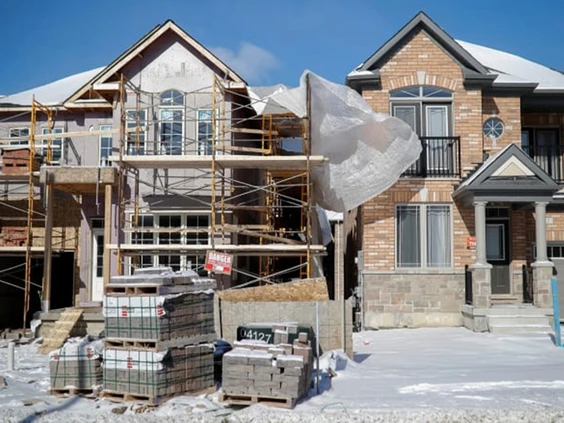Opinion Editorial
Originally published in Financial Post
April 1, 2022
Instead of measures to cool housing demand, we need to speed up development and construction
Housing affordability is probably the most critical issue Ontarians face today. Ontario housing prices have increased dramatically in recent years, vastly outpacing income growth and creating near-insurmountable barriers to home ownership for many.
The main factor contributing to Ontario’s rocketing housing prices is lack of supply. Canada has the lowest number of housing units per capita of any G7 country and Ontario’s housing shortage is the worst in the country. The province needs to add over 650,000 units just to reach the same housing-per-capita average as the rest of the country. To address Ontario’s housing affordability crisis, the Ontario Housing Affordability Task Force (OHATF) recently released a report that includes 55 recommendations aimed at improving affordability. On Wednesday, the government released a “More Homes for Everyone” plan that will implement watered-down versions of some of these 55 recommendations, which it said remain the “government’s long-term road map.”
With Canada welcoming a record 401,000 new permanent residents in 2021 and even higher targets set for the next three years, bold measures to increase housing supply are essential. Prices are not being driven by a “bubble” that is going to pop: there is simply not enough supply to meet current demand, let alone future needs. Instead of measures to cool demand, such as taxing house-flippers, we need to speed up development and construction.
The OHATF report urges the province to set a bold target of adding 1.5 million homes over the next 10 years and updating planning regulations to make this a priority. But 150,000 homes per year is a very big number. In 2021, only 81,325 new homes of any type were completed in the entire province. The reality is that every year supply falls significantly behind demand.
One of the primary causes of delays in housing development is the difficulty developers face in converting land-use permissions. A welcome recommendation of the OHATF report is to automatically convert underused commercial and industrial properties to allow for “mixed-use” development that permits both commercial and residential construction. These underutilized “employment lands” are sometimes reserved for uses that no longer fit urban needs and so are an excellent source of land for more housing supply. “Vertical intensification” — i.e., building higher — can preserve space for employment and still use valuable land for residential purposes, as well.
The OHATF report also attacks Ontario’s stringent heritage designations as an at-times unacceptable barrier to increasing housing supply. While the built history of the province must be protected, abuse of the heritage regulations crimps supply and makes development more expensive. The report’s recommendations would protect heritage-listed properties but also help ensure such designations are not used to stall development.
The OHATF also recommends expanding “as of right” permissions that allow property owners to build additional residential space on their property without having to go through complex and costly re-zoning and “minor variance” processes. These and similar measures would smooth development approval and help increase supply, but there is no denying that some of the OHATF recommendations would be highly controversial as their disruptive effects become apparent to homeowners and community associations. For instance, the recommendation to allow four-story, four-unit, multi-family residential buildings on all residential lots in the province “as of right” could hit single-family communities with construction chaos, street parking shortages, over-populated school districts, and extreme cost increases for home renovation projects.
But housing unaffordability has reached critical levels in Ontario and community pushback and government red tape have created significant barriers to increasing supply. Tough conversations therefore need to be had about which OHATF recommendations to legislate.
The OHATF report makes clear we need to fundamentally shift the way we think about city-building. If we hope to increase available housing stock and improve affordability, we need to see new development as the solution. It is therefore disappointing that the plan released this week does not seek to implement the report’s bolder recommendations, particularly the “as of right” suggestions.
As Ontario heads towards a provincial election, expect housing affordability to become a key issue. The housing crisis goes beyond party affiliation. People need places to live, and such places are in short supply. To create a better and fairer future for Ontarians, it is time to start considering the needs of future residents as well as the rights of current homeowners.
Randy Gladman is senior vice-president of development advisory at the management and investment services company Colliers in Toronto.


